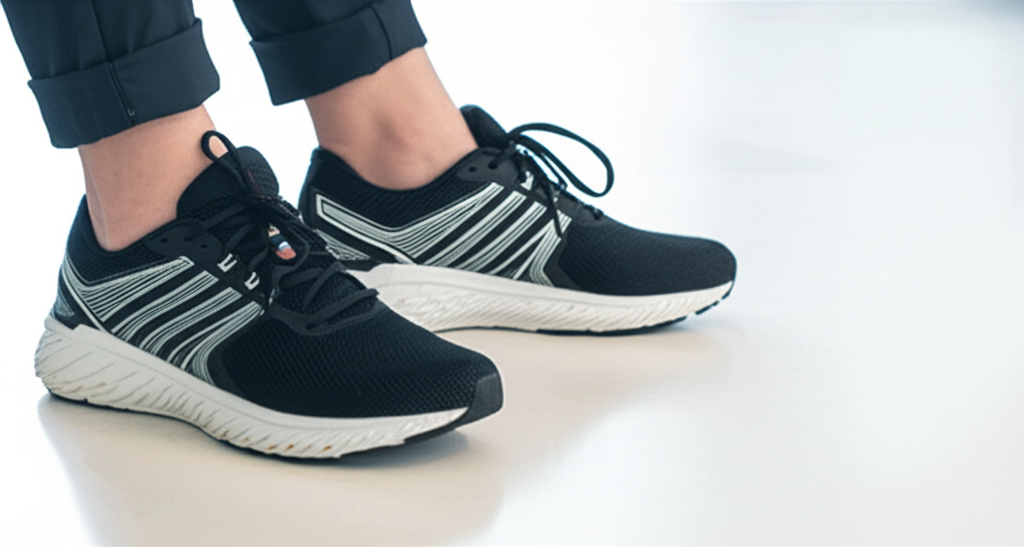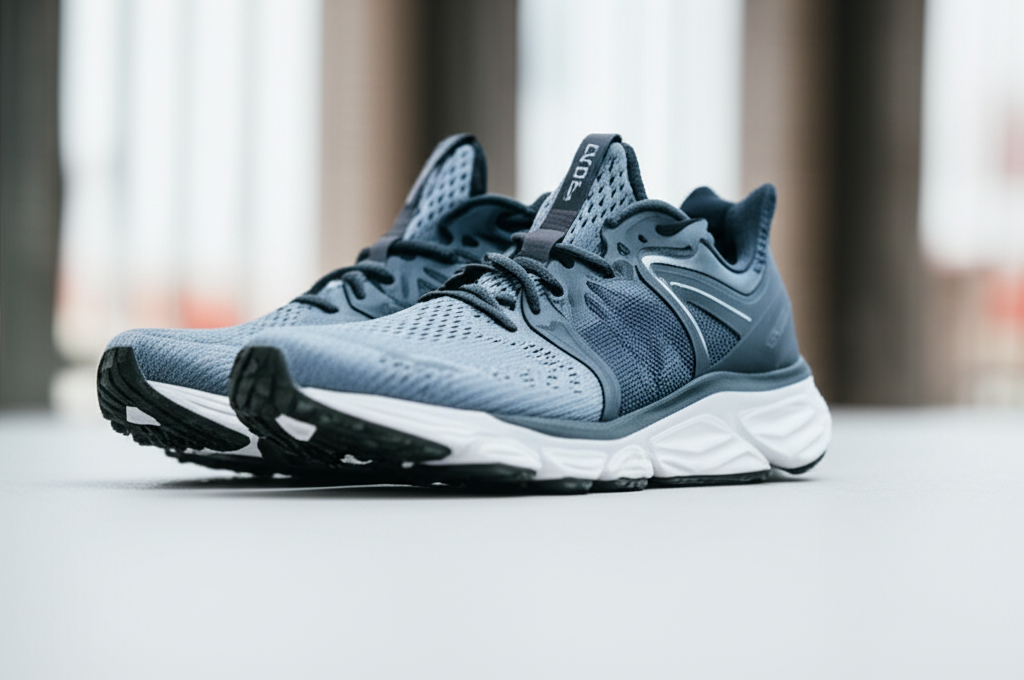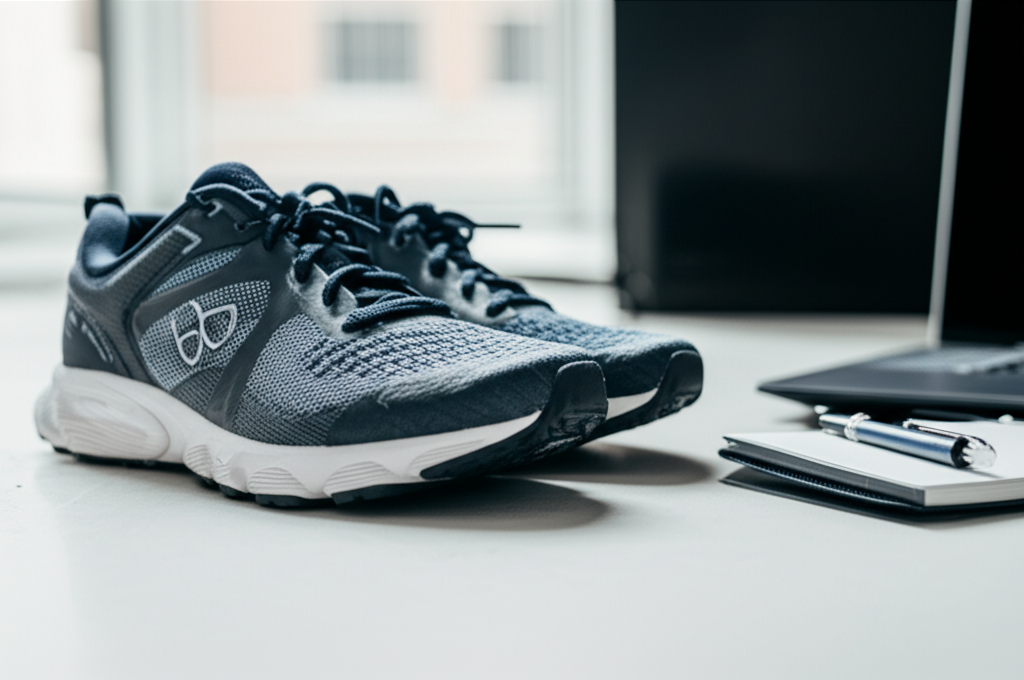Are running shoes good for work? The surprising truth is that while they offer excellent cushioning and support, most running shoes aren’t ideal for all types of work environments. Their specialized design focuses on athletic performance, which can sometimes be a disadvantage for long hours on your feet in a professional setting. Let’s explore when they might work and when it’s best to choose something else.
Key Takeaways
- Understand the purpose of running shoes.
- Identify key features for work footwear.
- Assess your work environment’s demands.
- Compare running shoes to other options.
- Prioritize foot health and safety at work.
- Make informed shoe choices for comfort.
Are Running Shoes Good for Work? The Surprising Truth
You spend a lot of time on your feet, whether you’re running errands or working a demanding job. You might be wondering if those comfy running shoes you love for your morning jog could also be your go-to footwear for a long workday. It’s a common question, and the answer isn’t as simple as a yes or no. Running shoes are designed for a very specific purpose: to help you move efficiently and comfortably during athletic activity. This specialized design can sometimes clash with the requirements of a typical workday. This article will guide you through understanding the differences and making the best choice for your feet and your job.
Understanding the Design of Running Shoes
To figure out if running shoes are suitable for work, we first need to understand what makes them tick. Running shoes are engineered with performance and injury prevention in mind. They are built to absorb impact, provide propulsion, and support your foot through a specific gait cycle – the way your foot moves from heel strike to toe-off while running.
Cushioning: The Star Player
One of the most prominent features of running shoes is their advanced cushioning systems. Brands use various proprietary foams, gels, and air units in the midsole to absorb the shock of each stride. This is fantastic when you’re pounding the pavement, as it reduces stress on your joints and muscles. For someone standing or walking for extended periods, this cushioning can seem like a huge benefit.
Lightweight Construction
Running shoes are typically very lightweight. This is crucial for runners who want to conserve energy and move quickly. Every ounce saved contributes to better performance. While being light is generally comfortable, it can sometimes mean less overall structure and support compared to shoes designed for all-day wear in a more stationary or varied environment.
Flexibility and Responsiveness
These shoes are designed to be flexible, allowing your foot to move naturally through the running motion. They are also responsive, meaning they provide a slight “spring” or energy return with each step. This helps propel you forward. For walking or standing, this responsiveness might feel a bit too much or even unstable if you’re not actively moving in a running stride.
Traction and Grip
The outsoles of running shoes are designed for specific surfaces. Road running shoes have smoother, more durable outsoles for pavement, while trail running shoes have aggressive lugs for grip on uneven terrain. While they offer good traction, it might not be optimized for the varied surfaces you encounter in a workplace, such as polished floors or slippery areas.
When Might Running Shoes Be Okay for Work?

There are specific scenarios where your running shoes might actually be a decent choice for your workday. These often involve jobs that require a lot of walking or standing in environments similar to where you’d use them for exercise.
Jobs Requiring Significant Walking or Light Activity
If your job involves a lot of walking, like a retail associate who moves around a store, a tour guide, or a healthcare professional who walks between patient rooms, the cushioning in running shoes can be beneficial. The shock absorption can help reduce fatigue in your legs and feet. However, it’s important to consider the type of walking you do. Is it a consistent, rhythmic stride, or does it involve a lot of stopping, starting, and pivoting?
Comfort-Focused Work Environments
Some workplaces have a very casual dress code and prioritize employee comfort above all else. In these settings, if safety isn’t compromised, wearing your running shoes might be perfectly acceptable and even encouraged. Think of creative industries or tech companies where athletic wear is common.
Transitioning to and from Work
Many people wear their running shoes to the gym or a fitness class and then change into work shoes. If your commute involves a lot of walking or standing at public transport stops, wearing running shoes for this part of your day can be a practical choice, as long as you have appropriate footwear for your actual work tasks.
Why Running Shoes Are Often NOT Ideal for Work
Despite their comfort, running shoes have limitations when it comes to the demands of many jobs. Their specialized design means they often lack features crucial for safety, stability, and long-term foot health in a professional setting.
Lack of Lateral Support
Running shoes are built for forward motion. They typically have minimal support for sideways movements. If your job requires you to pivot, twist, or make quick lateral adjustments (like in a busy kitchen or a warehouse), running shoes can be unstable. This lack of lateral support increases the risk of ankle sprains and other injuries. For comparison, many work-specific shoes, like cross-trainers or some athletic work shoes, offer enhanced stability for multi-directional movement.
Durability Issues in Work Environments
While running shoes are durable for running, they may not hold up well to the wear and tear of certain work environments. Factors like constant friction from walking on rough surfaces, exposure to chemicals, or impacts can degrade the materials and construction of running shoes faster than they would in athletic use. Work boots and shoes designed for specific industries often use more robust materials like reinforced leather, steel toes, and oil-resistant soles.
Inadequate Protection
Many jobs require specific safety features that running shoes simply don’t have. This includes:
- Toe Protection: Running shoes offer no protection against falling objects. Safety-toed footwear (steel, composite, or alloy) is mandatory in many industrial, construction, and warehouse roles. You can learn more about the importance of safety footwear from organizations like the Occupational Safety and Health Administration (OSHA).
- Puncture Resistance: Some workplaces require soles that can resist punctures from sharp objects, which running shoes lack.
- Slip Resistance: While running shoes offer traction, they are not typically designed with the specialized slip-resistant outsoles needed for greasy, wet, or oily surfaces common in kitchens, factories, or healthcare settings.
Potential for Over-Pronation or Supination Issues
Running shoes are often categorized by the level of support they offer for different foot strikes (neutral, stability, motion control). While this is great for runners, a shoe that’s too neutral for someone who over-pronates (foot rolls inward excessively) could exacerbate foot and knee pain when standing for long periods. Conversely, a stability shoe might be too restrictive for someone with a neutral gait. Work shoes often offer a more balanced support system suitable for general standing and walking.
Heat and Breathability Concerns
Running shoes are designed to be breathable for intense activity. However, in a warm workplace, or if you wear them for 10-12 hours straight, they might not offer enough ventilation, leading to sweaty feet and discomfort. Some work shoes are designed with specific ventilation features or are made from materials that manage heat and moisture differently.
When to Choose Work-Specific Footwear
For the vast majority of work environments, investing in shoes specifically designed for your job is the smartest choice. These shoes are built with your safety, comfort, and the specific demands of your profession in mind.
Safety First: Essential Work Shoe Features
When considering footwear for work, safety should always be your top priority. Look for features that protect you from common workplace hazards.
Table: Essential Work Shoe Features by Industry
| Industry | Key Safety Features | Why It Matters |
|---|---|---|
| Construction/Manufacturing | Steel/Composite Toe, Puncture-Resistant Sole, Slip-Resistant Outsole, Electrical Hazard (EH) Protection | Protects from falling objects, sharp debris, slips, and electrical currents. |
| Healthcare/Food Service | Slip-Resistant Outsole, Antimicrobial Lining, Easy to Clean Materials, Comfortable Cushioning | Prevents slips on wet/greasy floors, maintains hygiene, provides all-day comfort. |
| Retail/Hospitality | Slip-Resistant Outsole, Arch Support, Cushioning, Professional Appearance | Ensures safety, reduces foot fatigue from long hours of standing/walking. |
| Warehouse/Logistics | Reinforced Toe, Ankle Support, Durable Outsole, Slip Resistance | Protects feet from impacts, provides stability, handles varied flooring. |
Comfort for Long Hours
Work shoes are engineered for sustained comfort. This often means:
- Better Arch Support: More robust arch support designed for static standing and walking.
- Durable Midsole: Midsole materials that offer consistent cushioning without breaking down too quickly under constant pressure.
- Wider Toe Box: Often, work shoes have a more generous toe box to prevent cramping and allow for natural toe splay, especially important when standing for prolonged periods.
Durability and Longevity
Work shoes are built to last. They use tougher materials and construction methods to withstand daily use, abrasion, and sometimes exposure to elements or chemicals. This means they can be a better long-term investment, even if the initial cost is higher than a pair of running shoes.
Alternatives to Running Shoes for Work

If running shoes aren’t the best fit, what are your options? Fortunately, there’s a wide range of footwear designed for comfort, safety, and professionalism.
Athletic Work Shoes/Cross-Trainers
These shoes blend the comfort and cushioning of athletic shoes with some added stability and durability. They are a great option for jobs that involve a lot of walking but don’t require heavy-duty safety features. They often have better lateral support than running shoes and a more versatile outsole.
Work Boots
For physically demanding jobs, construction, or outdoor work, work boots are essential. They offer superior protection, ankle support, and durability. Many modern work boots are surprisingly comfortable and come with advanced cushioning and breathable materials.
Comfort Dress Shoes/Casual Work Shoes
If your workplace requires a more formal or business-casual appearance, there are many comfortable options available. Look for shoes with good cushioning, supportive insoles, and flexible materials. Many brands now offer “comfort” versions of loafers, oxfords, and other styles.
Supportive Walking Shoes
Designed specifically for walking, these shoes offer excellent cushioning, stability, and comfort for extended periods on your feet. They often have a more rounded toe box and a stiffer sole than running shoes, providing a stable platform for walking.
Specialty Safety Footwear
For high-risk environments, specialized safety shoes (e.g., slip-resistant, electrical hazard, metatarsal guards) are non-negotiable. These are designed with specific protective features to meet industry standards.
Pro Tip: When buying work shoes, try them on at the end of the day when your feet are slightly swollen. Wear the type of socks you’ll typically wear to work. Ensure there’s enough room to wiggle your toes and that there are no pressure points or rubbing.
Making the Right Choice for Your Feet and Your Job
Choosing the right footwear for work is a crucial decision that impacts your health, safety, and productivity. It’s not just about looking good; it’s about feeling good and staying injury-free.
Assess Your Work Environment
The first step is to thoroughly understand the demands of your job and workplace. Consider:
- How much time do you spend walking vs. standing?
- Do you navigate stairs, ramps, or uneven surfaces?
- Are there any slip, trip, or fall hazards?
- Are there risks of falling objects or sharp items?
- Is there a specific dress code?
- What are the temperature and general conditions of your workplace?
Prioritize Your Foot Health
Your feet are your foundation. Investing in proper footwear can prevent a host of problems, including plantar fasciitis, bunions, hammertoes, and general foot, leg, and back pain. Shoes designed for work offer the specific support and protection needed for long hours of standing and moving in a professional setting.
The Role of Insoles and Inserts
Sometimes, even the best work shoes can benefit from an upgrade. If you have specific foot conditions or need extra cushioning or arch support, consider adding aftermarket insoles or orthotics. These can be particularly helpful in work shoes that might otherwise feel a bit stiff. Always ensure they fit well within your chosen work footwear and don’t compromise the shoe’s safety features (like toe room).
When in Doubt, Consult an Expert
If you’re unsure about the best type of footwear for your job, don’t hesitate to ask your employer, a safety manager, or a podiatrist. They can provide guidance based on your specific role and any pre-existing foot conditions.
Frequently Asked Questions (FAQ)
Q1: Can I wear my running shoes to an office job?
A1: For many office jobs, especially those with a casual dress code and minimal physical demands, comfortable running shoes might be acceptable. However, ensure they don’t compromise any professional appearance standards and that they provide adequate support for sitting and occasional walking.
Q2: Are running shoes good for standing all day at work?
A2: While the cushioning is appealing, running shoes are not typically designed for prolonged static standing. They may lack the necessary arch support and stability for all-day wear, potentially leading to foot fatigue or pain. Specialized work shoes or comfortable walking shoes are usually better.
Q3: What’s the main difference between running shoes and work shoes?
A3: Running shoes are designed for forward motion and impact absorption during exercise. Work shoes are built for durability, safety (e.g., toe protection, slip resistance), and sustained comfort for various job demands, often including lateral support and more robust construction.
Q4: Can I put insoles in my running shoes to make them better for work?
A4: Adding insoles can improve comfort and support, but it doesn’t change the fundamental design limitations of running shoes for work, such as lack of lateral stability or safety features. It’s a temporary fix rather than a long-term solution for many jobs.
Q5: Are athletic work shoes a good compromise?
A5: Yes, athletic work shoes or cross-trainers can be an excellent compromise for jobs requiring a lot of movement but not heavy-duty safety features. They offer more support and durability than running shoes while retaining a comfortable, athletic feel.
Q6: How do I know if my work requires safety shoes?
A6: Your employer or HR department should provide clear guidelines. Industries like construction, manufacturing, healthcare, and warehousing often have mandatory safety footwear requirements due to inherent risks. OSHA standards also outline requirements for personal protective equipment, including footwear.
Conclusion

While your running shoes offer fantastic cushioning and comfort for your workouts, they are rarely the optimal choice for most work environments. Their design is specialized for athletic performance, often lacking the crucial lateral support, protective features, and robust durability needed for long hours on your feet in a professional setting. For jobs requiring safety, stability, or specific protection, investing in work-specific footwear—whether that’s safety boots, slip-resistant shoes, or supportive athletic work shoes—is essential for your health, safety, and overall well-being. By understanding the unique demands of your job and the features of different shoe types, you can confidently choose footwear that keeps you comfortable, protected, and ready to tackle your workday.

